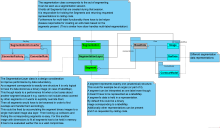| | Status | Assigned | Task |
|---|
| | Resolved | kislinsk | T27807 [MultiLabel Segmentation] Inspection of module and plugin |
| | Wontfix | None | T22593 Update the MitkMultilabelTestDriver |
| | Wontfix | None | T22458 Merging a label in the MultiLabel segmentation plugin leaves one label without a segmentation |
| | Open | None | T26397 Multilabel Segmentation file cannot be converted to multilabel segmentation in MITK |
| | Resolved | floca | T23981 Multilabel color map should disable interpolation |
| | Resolved | kislinsk | T25445 MultiLabel segmentation mapper is very slow |
| | Resolved | kalali | T28131 [MultiLabel Segmentation] 3D Threshold tool does not work with multiple labels / layers |
| | Resolved | kislinsk | T28176 [Segmentation] Inspection of module and plugin |
| | Resolved | floca | T28526 [Segmentation] Check tools (especially 3D tools) to correctly handle updating of LabelSetImage |
| | Resolved | kislinsk | T26959 [Segmentation] Newly created LabelSet segmentation is not displayed as "outline binary" |
| | Resolved | kislinsk | T28479 [Segmentation] Rethink / reevaluate our existing segmentation tools / algorithms |
| | Open | None | T8140 Reimplement volume annotations for segmentations |
| | Resolved | kislinsk | T27319 [Segmentation] Correctly implement interpolation features for Multilabel Segmentation View |
| | Open | floca | T28524 Refactor LabelSetImage and associated classes. |
| | Resolved | floca | T23721 Project "Astonishing Angelfish" |
| | Resolved | floca | T23742 Implement proof of concept for new segmentation data type |
| | Wontfix | None | T23772 Implement adaptor between new segmentation data type and current segmentation data type |
| | Resolved | kislinsk | T23867 Improve mitk::WeakPointer |
| | Resolved | kislinsk | T23971 Implement robust, easy-to-use ExtractSliceFilter |
| | Wontfix | None | T24303 A segmentation should generate all DICOM relevant IDs as soon as it can be referenced. |
